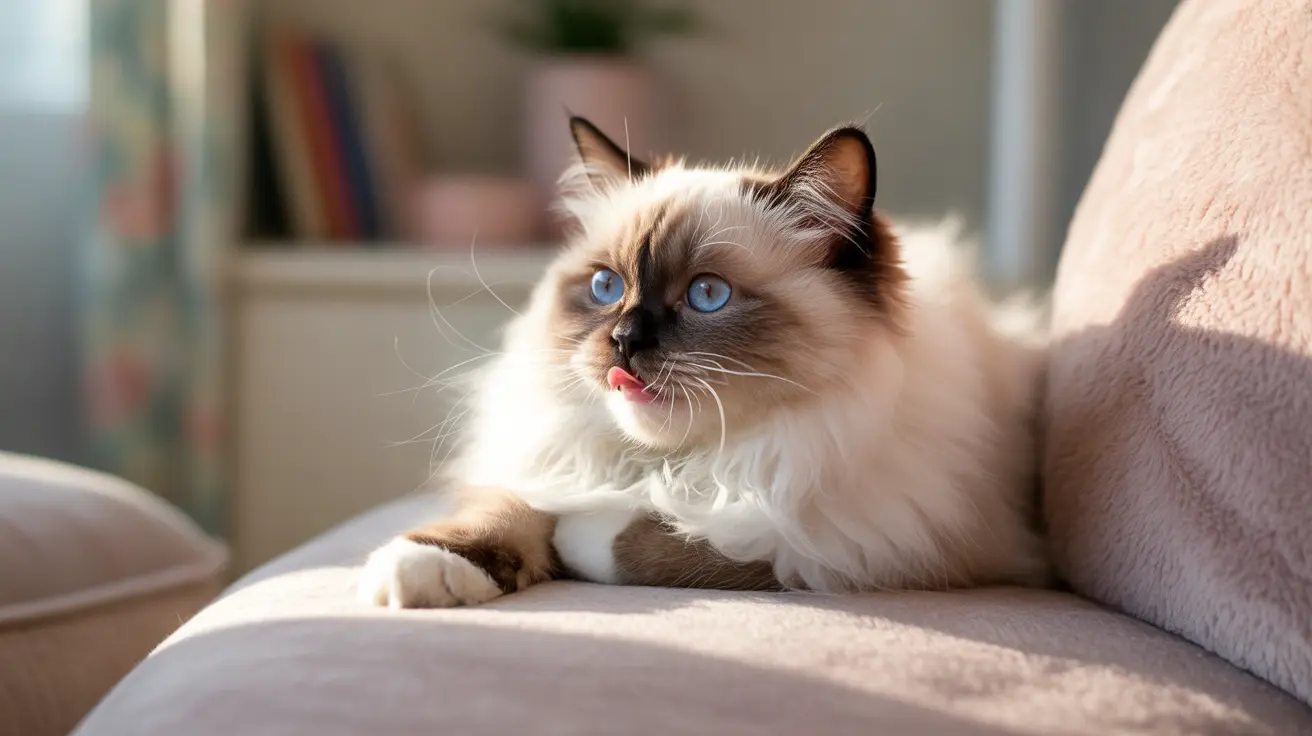If you've ever noticed your cat drooling during a petting session, you're not alone. This seemingly strange behavior often surprises cat owners, but it's typically a sign of contentment and relaxation. However, understanding when drooling is normal versus when it might indicate a health concern is crucial for your pet's wellbeing.
In this comprehensive guide, we'll explore the various reasons behind your cat's drooling behavior, helping you distinguish between happy drools and potential warning signs that require veterinary attention.
The Joy of Drooling: Normal Causes
Happy Drooling and Kittenhood Connection
When your cat drools while being petted, it often stems from a deeply rooted connection to their nursing days as a kitten. This behavior, combined with kneading (making biscuits), releases feel-good endorphins that can trigger slight salivation. It's essentially your cat's way of showing complete trust and contentment.
The Science Behind Pleasure Drooling
During pleasurable petting sessions, cats experience a surge of positive emotions that can stimulate their parasympathetic nervous system. This "rest and digest" response can lead to increased salivation, especially when combined with purring and relaxation.
Medical Causes for Concern
Dental Issues and Oral Health
While happiness-induced drooling is normal, excessive or sudden drooling might indicate dental problems. With over 80% of cats developing dental disease by age four, it's essential to monitor your cat's oral health carefully. Signs of dental issues include bad breath, difficulty eating, and constant drooling rather than just during petting.
Other Health-Related Causes
Sometimes, drooling can signal more serious conditions:
- Upper respiratory infections
- Nausea or gastrointestinal issues
- Oral tumors or injuries
- Exposure to toxins
- Foreign objects stuck in the mouth
When to Contact Your Veterinarian
While occasional drooling during petting is usually harmless, certain signs warrant immediate veterinary attention:
- Drooling accompanied by lethargy or loss of appetite
- Blood-tinged saliva
- Foul mouth odor
- Difficulty eating or swallowing
- Changes in behavior or energy levels
Creating a Positive Environment
To ensure your cat's drooling remains in the "happy" category, maintain regular veterinary check-ups and create a stress-free environment. This includes establishing routine dental care and providing safe spaces for relaxation.
Frequently Asked Questions
Why does my cat drool when I pet him—is it a sign of happiness or something else?
When drooling occurs during petting and is accompanied by purring, kneading, and relaxed body language, it's typically a sign of happiness and contentment. This behavior often relates to positive memories from kittenhood and indicates deep trust in their human companion.
Could my cat's drooling during petting indicate dental problems or other health issues?
While drooling during petting is usually normal, persistent drooling or drooling accompanied by bad breath, difficulty eating, or behavioral changes could indicate dental disease or other health problems. Regular veterinary check-ups can help identify any underlying issues.
How can I tell if my cat's drooling is from relaxation or stress?
Relaxation drooling typically occurs during peaceful moments and is accompanied by positive body language like purring and kneading. Stress-related drooling often happens during anxiety-inducing situations like car rides or vet visits and may be accompanied by hiding, panting, or agitation.
When should I be worried and take my cat to the vet for drooling?
Seek veterinary care if drooling is excessive, constant, or accompanied by symptoms like difficulty eating, bad breath, bleeding, lethargy, or behavioral changes. These could indicate serious health issues requiring immediate attention.
Can certain medications or toxins cause my cat to drool excessively?
Yes, exposure to toxic substances, certain medications, or household plants can cause excessive drooling. If you suspect your cat has been exposed to toxins or is having an adverse reaction to medication, contact your veterinarian immediately.
Understanding your cat's drooling behavior helps strengthen your bond and ensures their health and happiness. While happy drooling during petting is usually nothing to worry about, staying attentive to changes in this behavior can help you catch potential health issues early.






